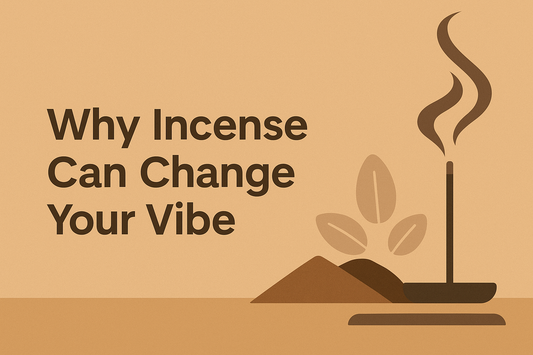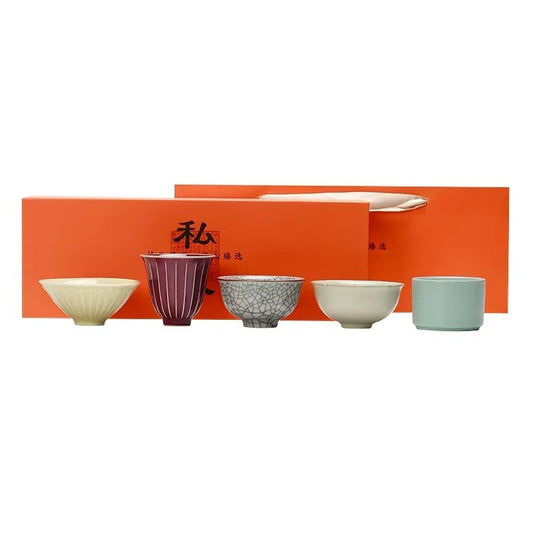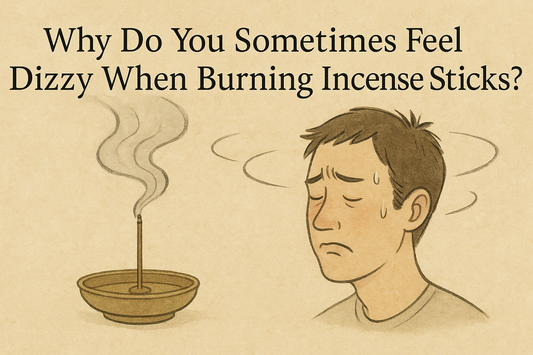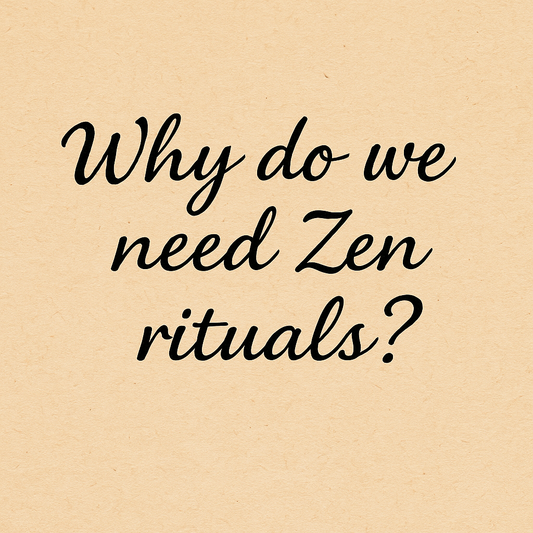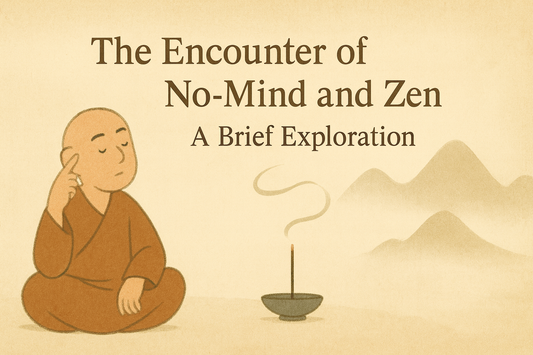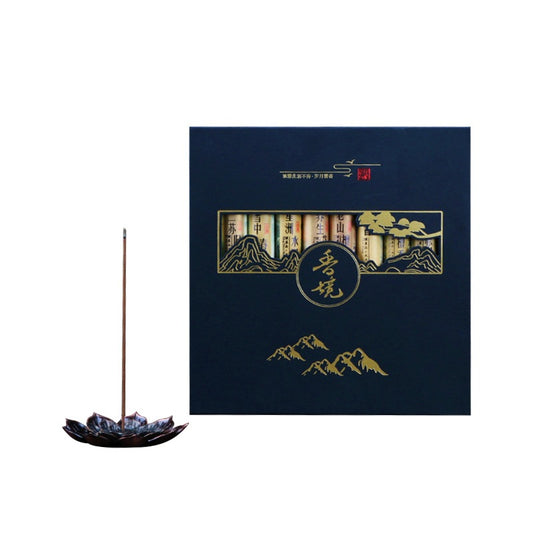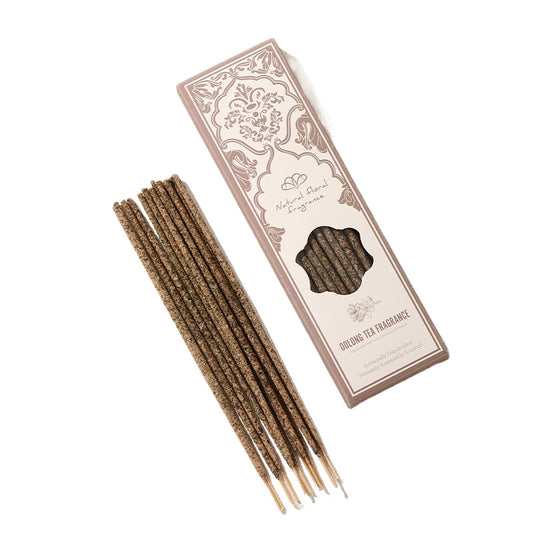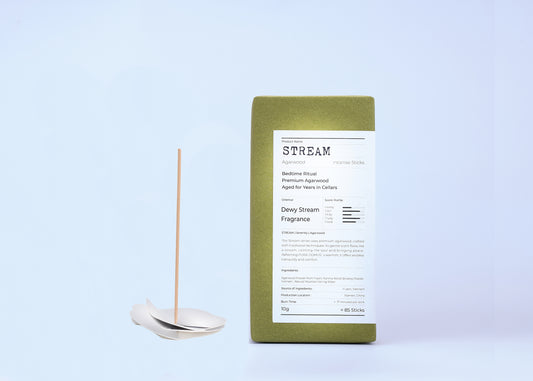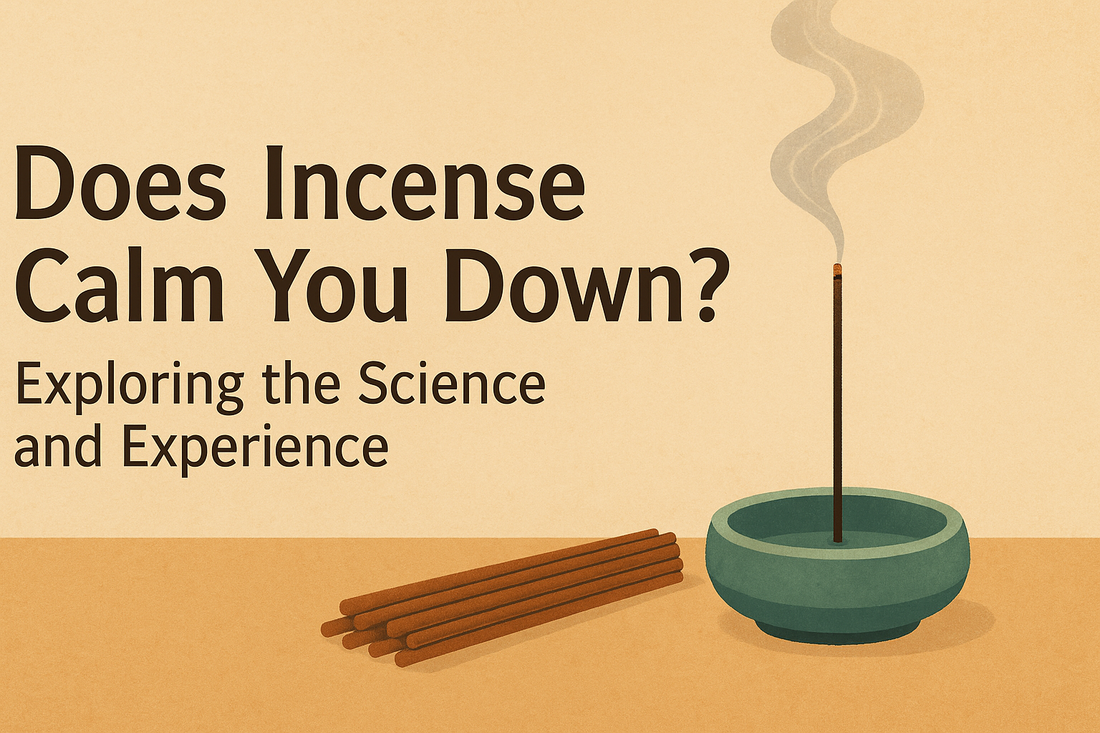
Does Incense Calm You Down? Exploring the Science and Experience
In our fast-paced, hyper-connected world, the search for tranquility has become more than a luxury; it's a necessity. We're constantly bombarded with information, deadlines, and social pressures, leaving many of us feeling anxious and overwhelmed. It's no wonder that ancient practices promoting mindfulness and relaxation are experiencing a modern renaissance. Among these, the simple act of burning incense has stood the test of time, a fragrant ritual that has been a part of spiritual and cultural ceremonies for millennia.
But does it actually work? Can a simple stick of incense truly calm you down? Or is it just a pleasant smell with a placebo effect? This is a question that many of us, from stressed-out students in bustling city apartments to busy professionals seeking a moment of peace, have asked ourselves. We're going to delve into this question, exploring both the scientific evidence and the subjective experience of using incense for relaxation. We'll look at the active compounds in incense, how they interact with our brains, and the psychological power of ritual. This isn't just about whether incense can make your room smell nice; it's about whether it can genuinely help you find a moment of calm in the chaos of modern life.
The Science Behind the Scent: How Incense Interacts with Your Brain incense calm brain science
It might feel like magic, but the calming effects of incense are increasingly supported by scientific inquiry. The key lies in the complex interplay between the aromatic compounds released by burning incense and our brain chemistry. Our sense of smell, unlike other senses, has a direct and powerful link to the limbic system – the brain's emotional control center.
A Direct Line to Emotions: The Olfactory-Limbic Connection
When you inhale the fragrant smoke from incense, the aromatic molecules travel directly to your olfactory bulb. From there, signals are sent to the limbic system, which includes structures like the amygdala (involved in emotion and fear) and the hippocampus (involved in memory). This direct pathway means that scents can trigger immediate emotional and physiological responses, bypassing the conscious thought processes that often filter other sensory inputs . This is why a particular scent can instantly transport you back to a childhood memory or evoke a strong feeling of calm or excitement.
Research has shown that certain compounds found in natural incense ingredients can influence neurotransmitters and brainwave activity. For instance, studies on frankincense, a common incense ingredient, have identified compounds like incensole acetate. This compound has been found to activate ion channels in the brain that are known to alleviate anxiety and depression in mice. While human studies are still ongoing, these findings suggest a plausible biological mechanism for the calming effects reported by many incense users.
Beyond Chemistry: The Power of Ritual and Expectation
While the chemical interactions are significant, the calming effect of incense isn't solely a biological phenomenon. The ritualistic aspect of burning incense plays a crucial psychological role. The deliberate act of lighting a stick, watching the smoke gently unfurl, and consciously focusing on the aroma can serve as a powerful cue for your mind to shift gears. This ritual creates a dedicated space and time for relaxation, signaling to your brain that it's time to unwind and let go of daily stresses. It's a form of mindful practice that can anchor you in the present moment, reducing mental clutter and promoting a sense of peace .
Furthermore, the expectation of relaxation can itself contribute to the calming effect. If you associate incense with moments of peace, meditation, or spiritual practice, your brain is primed to respond with relaxation when you encounter the scent. This is a well-known placebo effect, but one that is no less powerful in its ability to induce a state of calm. The combination of physiological responses from aromatic compounds and the psychological power of ritual and expectation creates a holistic calming experience.
Your Aromatic Allies: Key Incense Types for Cultivating Calm best incense for relaxation
Not all incense is created equal when it comes to promoting tranquility. Different aromatic compounds found in various natural ingredients offer distinct calming benefits. Understanding these can help you choose the right incense for your specific needs.
Sandalwood: The Grounding Meditator
Sandalwood is perhaps the most revered incense for its calming and meditative properties. Its rich, woody, and creamy aroma is deeply grounding, helping to quiet the mind and foster a sense of inner peace. The primary active compound, santalol, has been studied for its sedative effects, making sandalwood an excellent choice for meditation, yoga, or simply unwinding after a long day. Many find its scent helps to reduce mental agitation and promote a state of stillness, making it a staple in spiritual practices across Asia.
Lavender: The Anxiety Alleviator
Lavender is a classic for relaxation, and for good reason. Its sweet, floral, and herbaceous scent is widely recognized for its ability to alleviate anxiety, reduce stress, and promote restful sleep. The compounds linalool and linalyl acetate, abundant in lavender, are known to interact with neurotransmitters in the brain, promoting a sense of calm and well-being. If you struggle with racing thoughts before bed or need a gentle way to de-stress, lavender incense can be a powerful ally.
Frankincense: The Breath Deepener
With its earthy, resinous, and slightly citrusy notes, frankincense has been used for millennia in spiritual and healing practices. It is particularly known for its ability to deepen breathing and calm the nervous system. The active compounds, such as incensole and incensole acetate, have shown promise in scientific studies for their anti-depressive and anxiolytic effects. Burning frankincense can create a sacred and serene atmosphere, ideal for introspection, prayer, or when you need to clear your mind and find clarity.
Chamomile: The Gentle Soother
Often enjoyed as a calming tea, chamomile also translates beautifully into incense. Its gentle, apple-like aroma is excellent for easing tension and promoting a sense of comfort and well-being. Chamomile is particularly beneficial for those seeking a mild, non-overpowering scent to help them relax and unwind, especially before sleep or during moments of mild stress.
Vetiver: The Emotional Stabilizer
Less commonly known in mainstream aromatherapy but incredibly potent, vetiver possesses a deep, earthy, and smoky aroma. It is profoundly grounding and stabilizing, making it highly effective for mitigating feelings of overwhelm and promoting emotional balance. If you find yourself easily agitated or emotionally scattered, vetiver incense can help anchor you and bring a sense of calm resilience.
Agarwood (Oud): The Meditative Luxury
While often associated with luxury and exclusivity, high-quality agarwood, or Oud, offers profound calming benefits. Its complex, rich, and woody aroma is deeply meditative, capable of quieting the mind and inducing a state of profound peace. Though an investment, the unique and lasting tranquility it provides makes it a cherished choice for those seeking deep relaxation and spiritual connection.
When selecting incense for calming purposes, always prioritize natural, high-quality ingredients. Synthetic fragrances, often found in cheaper incense, can be irritating and lack the true therapeutic benefits of their natural counterparts. Look for brands that emphasize purity, traditional crafting methods, and sustainable sourcing to ensure you are getting the most effective and beneficial product.
Integrating Incense into Your Daily Routine for Maximum Calm incense for stress relief and sleep
A strategic approach to using calming incense can significantly enhance its effectiveness.
1. Establish a Sanctuary: Designate a clean, uncluttered space for your relaxation ritual. A serene environment amplifies the calming effects of the incense.
2. Practice Mindful Lighting: Treat the act of lighting the incense as a moment of mindfulness. This simple ritual can effectively shift your focus to the present.
3. Ensure Proper Ventilation: Gentle airflow is essential. It circulates the aroma without making it overwhelming and ensures a cleaner, safer burn.
4. Time Your Rituals:
- For Sleep: Burn lavender or chamomile incense 30 minutes before bed to signal the body and mind to wind down.
- For Meditation: Use sandalwood or frankincense to deepen focus and quiet the mind during practice.
- For Stress Reduction: Light an incense stick upon returning home from a stressful day to facilitate a transition to a relaxed state.
- During a Bath: A warm bath combined with the soothing aroma of incense is a powerful stress-buster. Place the incense burner safely away from water.
5. Personalize Your Scents: Individual responses to scents vary. Experiment with different types of calming incense to identify the aromas that are most effective for you.
Conclusion: A Scientifically-Backed Path to Inner Peace
In a world that relentlessly demands our attention and energy, finding moments of genuine calm is not merely a luxury but a fundamental necessity for mental and emotional well-being. The ancient practice of burning incense, far from being a mere aesthetic indulgence, offers a scientifically-supported and time-honored method for cultivating this much-needed peace within your own home. It is a versatile tool for mindfulness, a potent catalyst for relaxation, and a tangible pathway to a more serene and balanced existence. By understanding the intricate mechanisms through which incense interacts with our senses and minds, and by thoughtfully integrating this practice into your daily routine, you can effectively harness its power for improved well-being. So, take a moment, light a stick of your chosen calming incense, breathe deeply, and allow its gentle embrace to guide you to your inner sanctuary. Your mind, body, and soul will undoubtedly thank you for this profound act of self-care.
Frequently Asked Questions (FAQ) about Incense and Calm
Q1: Can incense really reduce stress and anxiety?
Yes, scientific studies suggest that certain compounds in natural incense, such as frankincense and sandalwood, can interact with the brain's limbic system to reduce stress hormones and promote relaxation. The ritualistic act of burning incense also contributes to mindfulness, further aiding in stress and anxiety reduction.
Q2: What types of incense are best for calming and relaxation?
Incense made from natural ingredients like sandalwood, lavender, frankincense, chamomile, vetiver, and high-quality agarwood (Oud) are particularly effective for calming and relaxation due to their specific aromatic compounds and their known therapeutic properties.
Q3: How long should I burn incense to achieve a calming effect?
For general relaxation, burning incense for 15-30 minutes is typically sufficient. For deeper meditative states, it can be burned for longer periods, provided there is adequate ventilation to ensure air quality.
Q4: Is it safe to use incense if I have allergies or respiratory issues?
Individuals with respiratory conditions such as asthma should exercise caution. It is essential to ensure excellent ventilation and to use only high-quality, natural incense free from synthetic additives. Consulting a healthcare professional is recommended if you have pre-existing respiratory concerns.
Q5: How does the ritual of burning incense contribute to calmness?
The ritualistic aspect of burning incense—the deliberate act of lighting it, observing the smoke, and focusing on the aroma—serves as a powerful cue for the mind to slow down. This mindful engagement helps to anchor you in the present moment, reducing mental clutter and promoting a sense of peace, independent of the chemical effects.
Q6: Where can I find high-quality calming incense?
For high-quality, natural calming incense, consider exploring reputable brands that prioritize purity and traditional crafting methods. You can find a curated selection of handcrafted incense and burners designed for mindful living at MonianLife.
References
[1] A. K. Singh et al., "Aromatherapy: A Comprehensive Review," Journal of Clinical and Diagnostic Research, vol. 10, no. 8, pp. ZE01-ZE05, Aug. 2016. [Online]. Available: https://www.ncbi.nlm.nih.gov/pmc/articles/PMC5038332/
[2] M. Moussaieff et al., "Incensole acetate, an incense component, elicits psychoactivity by activating TRPV3 channels in the brain," *FASEB Journal*, vol. 22, no. 8, pp. 3024-3034, Aug. 2008. [Online]. Available: https://www.fasebj.org/doi/full/10.1096/fj.07-101865
[3] S. Koulivand et al., "Lavender and the Nervous System," Evidence-Based Complementary and Alternative Medicine, vol. 2013, Article ID 681304, 10 pages, 2013. [Online]. Available: https://www.ncbi.nlm.nih.gov/pmc/articles/PMC3612440/
[4] P. S. S. S. Rao et al., "Sandalwood (Santalum album L.): A Review of Its Phytochemistry and Pharmacology," Journal of Essential Oil Bearing Plants, vol. 21, no. 6, pp. 1507-1520, 2018. [Online]. Available: https://www.tandfonline.com/doi/abs/10.1080/0972060X.2018.1554554
[5] M. K. Kim et al., "Effects of lavender oil on stress, anxiety, and sleep quality in patients with chronic insomnia: A randomized controlled trial," *Journal of Clinical Nursing*, vol. 28, no. 1-2, pp. 36-45, Jan. 2019. [Online]. Available: https://onlinelibrary.wiley.com/doi/abs/10.1111/jocn.14609
[6] A. Al-Harrasi et al., "Frankincense: A Systematic Review of Its Phytochemistry, Pharmacology, and Clinical Applications," *Molecules*, vol. 25, no. 21, p. 5048, Oct. 2020. [Online]. Available: https://www.mdpi.com/1420-3049/25/21/5048



